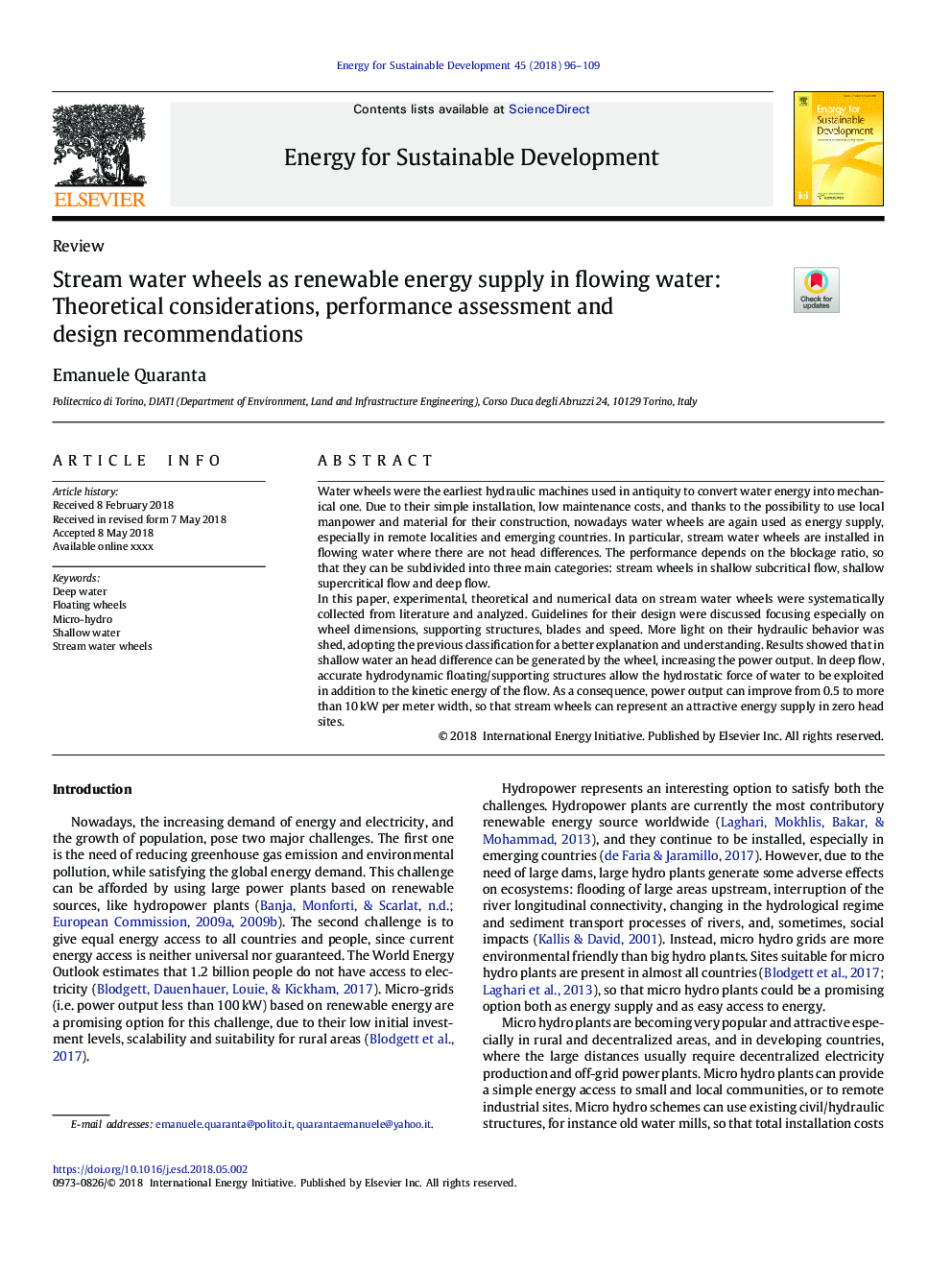| Article ID | Journal | Published Year | Pages | File Type |
|---|---|---|---|---|
| 7453541 | Energy for Sustainable Development | 2018 | 14 Pages |
Abstract
In this paper, experimental, theoretical and numerical data on stream water wheels were systematically collected from literature and analyzed. Guidelines for their design were discussed focusing especially on wheel dimensions, supporting structures, blades and speed. More light on their hydraulic behavior was shed, adopting the previous classification for a better explanation and understanding. Results showed that in shallow water an head difference can be generated by the wheel, increasing the power output. In deep flow, accurate hydrodynamic floating/supporting structures allow the hydrostatic force of water to be exploited in addition to the kinetic energy of the flow. As a consequence, power output can improve from 0.5 to more than 10â¯kW per meter width, so that stream wheels can represent an attractive energy supply in zero head sites.
Keywords
Related Topics
Physical Sciences and Engineering
Energy
Energy (General)
Authors
Emanuele Quaranta,
